Four things you should order at rotating sushi restaurant Sushiro if you don’t eat raw fish
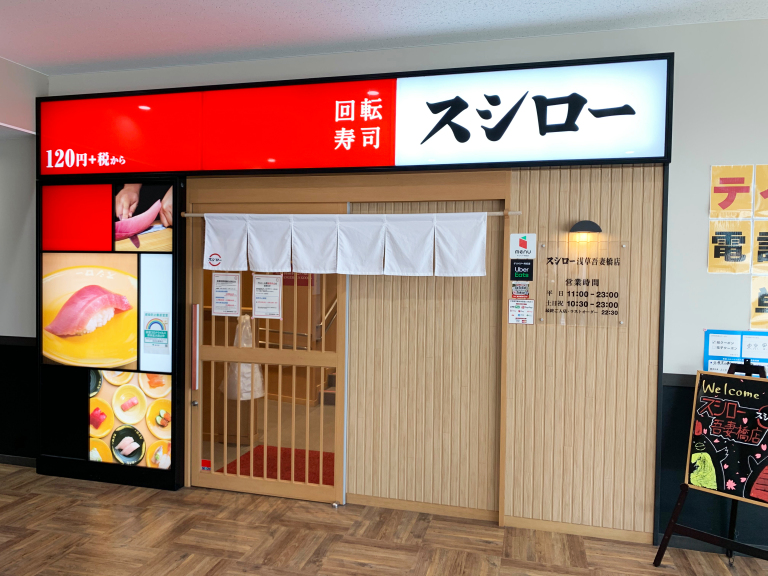
We asked a kaiten-zushi superfan, and they didn’t disappoint!
If we were to ask you to name a type of Japanese food, what would be the first thing that comes to mind? Probably sushi, right? In Japan, sushi is easy to find and even completely affordable if you go to a conveyer belt-style sushi restaurant, also known as kaiten-zushi. It’s a popular spot for family dinners, meals with friends, and even solo dining.
Unfortunately, not everyone eats raw fish, even in Japan, but luckily for those that don’t, kaiten-zushi restaurants serve plenty of dishes other than raw sushi, so you don’t have to turn down an invitation from family and friends to dine there. In fact, our Japanese-language reporter Seiji Nakazawa asked a kaiten-zushi superfan for some recommendations for non-sushi options at Sushiro, one of the most popular rotating sushi restaurants, and they did not disappoint!
▼ Our own office enjoys a trip to Sushiro, especially to crush a food challenge.
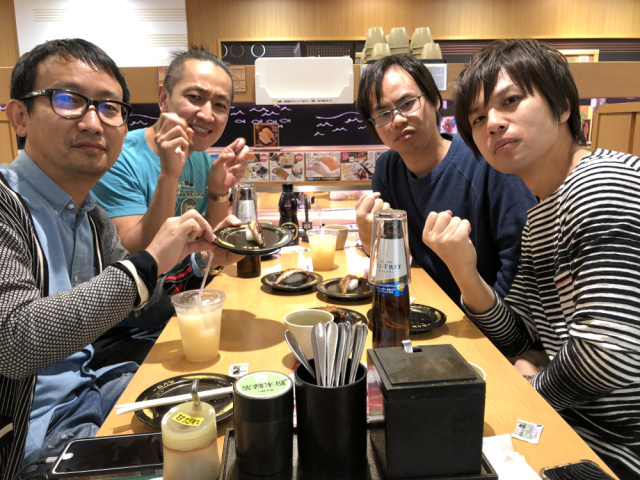
Our superfan, who we’ll call Kurara Sengyo, is an office worker who discovered the charms of rotating sushi restaurants more than 30 years ago. Ever since then, they live every day just to eat at kaiten-zushi restaurants. Surprisingly, when Seiji asked Kurara about the non-sushi options at Sushiro, they told him that their favorite thing on the menu isn’t actually raw fish.
Kurara: “All of the branches might not have all the same menu items, but if that’s okay I’ll give you some recommendations.”
Seiji: “Yes, please!”
Kurara: “Now, for me, since I like raw fish, that’s the first thing I always order. But lately there’s a dish I just have to eat every time I go, and that’s the Butterfish Tempura Nigiri” [マナガツオ天ぷら握り/’Managatsu Tempura Nigiri’]
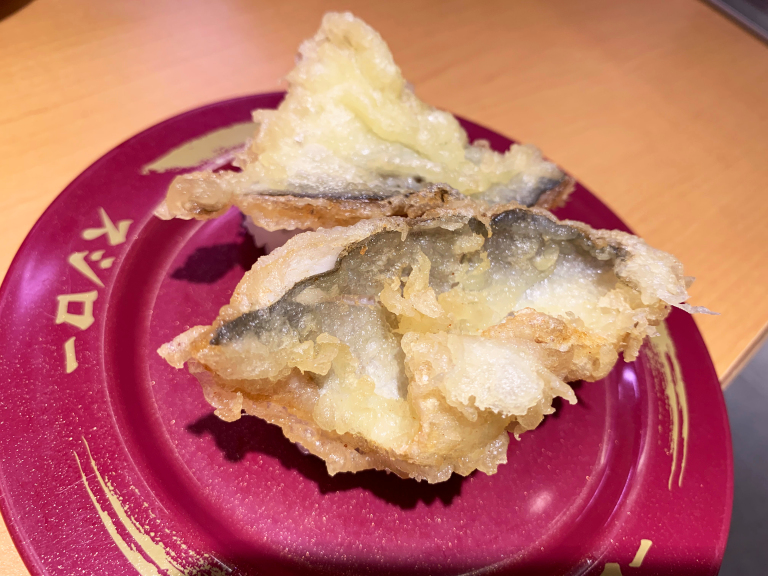
Kurara: “The size of the tempura is huge, and the skin is so crispy and the inside so fluffy. With a little bit of salt, these are unbelievably delicious. Since it’s only 150 yen (US$1.30), or 170 yen in the city, I can’t help but order several plates every time.”
The description alone sounds delicious. There’s nothing like a fluffy interior surrounded by a deliciously crunchy exterior. If you don’t eat raw fish but you do like cooked fish, this is definitely a good substitute. And you can’t beat the price!
Kurara: “You might think only of raw fish when you think of sushi, but fried options often come in big portions for a good price. Fried shrimp and crab sticks are usually pretty big and pretty cheap. And Sushiro’s tempura is especially good with its really light battering. I highly recommend it!”
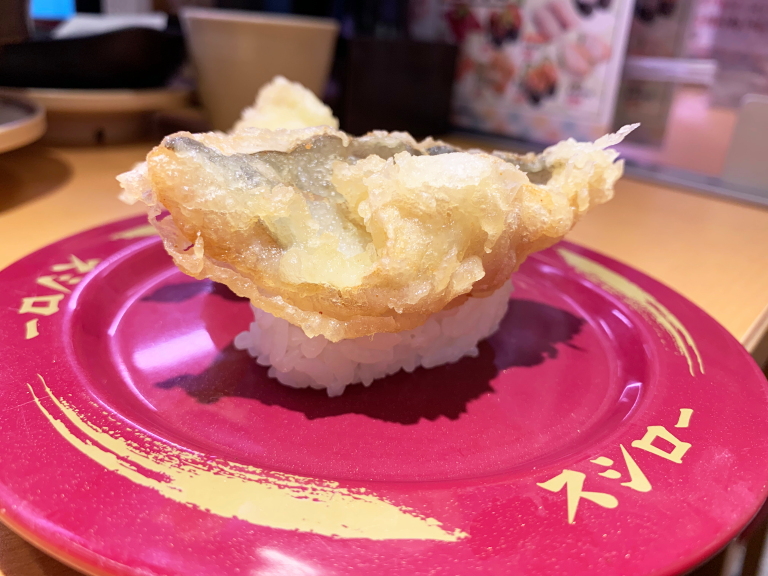
“What about noodle dishes?” asked Seiji. When people in Japan think of kaiten-zushi dishes without raw fish, noodles are the first thing that come to mind. Which dish is the best at Sushiro, according to Kurara?
Kurara: “In my opinion, the noodle dishes at Sushiro feel more like they’re meant to be a palate cleanser. Well, at 330 yen or thereabouts you can’t beat their cost performance, but I think of them as a more an in-between food than a main dish. However, the Roast Beef Mazesoba (ローストビーフまぜそば) is actually a pretty strong contender on its own.”
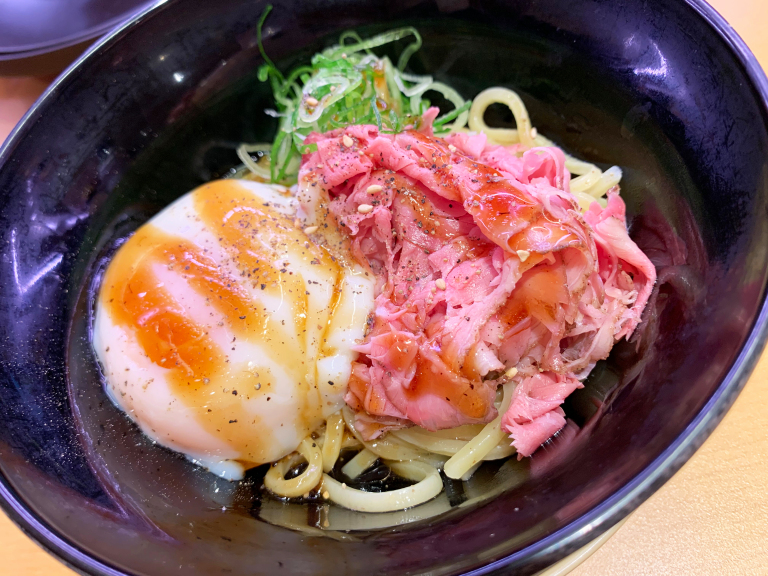
Kurara: “It has a nice, thick soup, and that, together with the soft-boiled egg and the roast beef, makes a dish that’s satisfying enough to eat on its own. It costs 380 yen (400 yen in the city) so it’s a little more expensive, but you won’t regret ordering it. It’s not rich or anything either, which is nice.”
Seiji: “I tried that the other day! It definitely felt like something I could eat two of.”
Kurara: “It’s part of the Meat Festival campaign they’re holding right now until May 9, so it might not be around forever…but on the other hand it could become a secret menu item after this!”
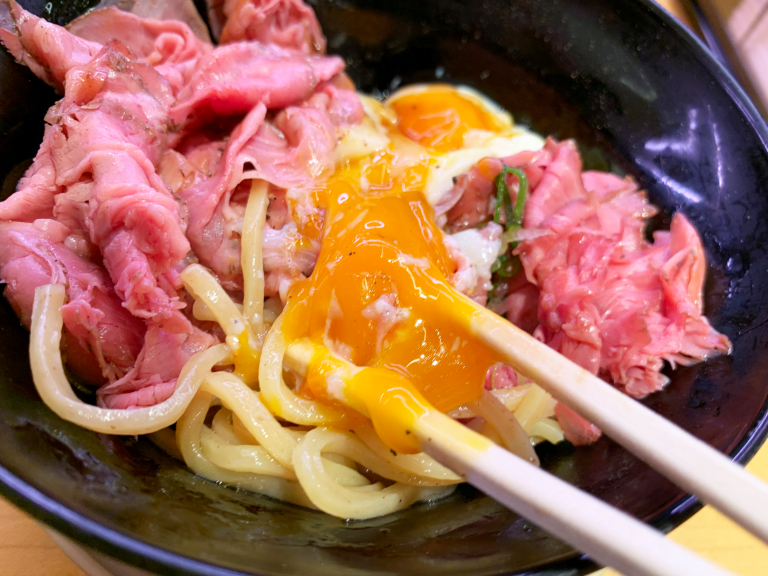
Seiji: “Do you have any fried food recommendations from the side menu?”
Kurara: “To be honest, any of Sushiro’s fried foods are good. The fries and the pumpkin tempura are just 100 yen (120 yen in the city) and come in a good portion size. But I absolutely have to recommend the Octopus Karaage (たこのから揚げ, ‘Tako no Karaage’) for 280 yen (300 yen in the city).”
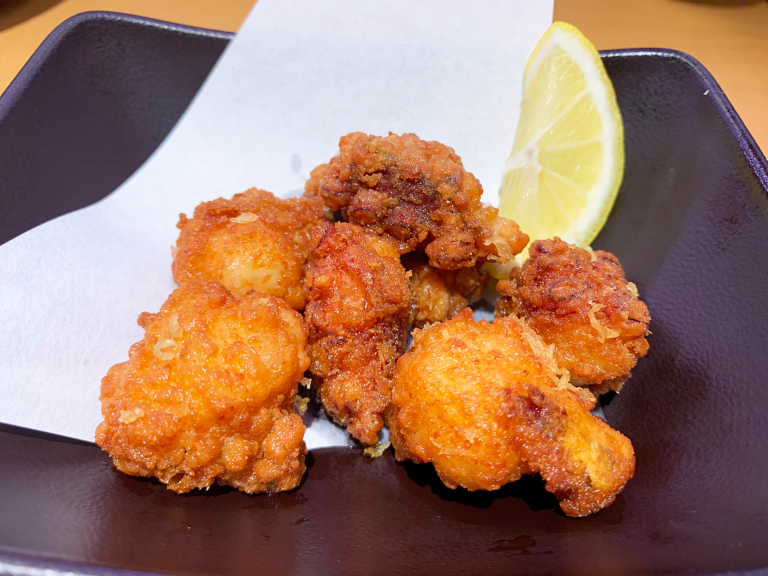
Seiji: “Even though karaage is usually fried chicken, you recommend the octopus instead?”
Kurara: “The chicken karaage, when you look at the price, is just kind of average. But the octopus karaage is crazy good. I only just tried it for the first time recently and now I wonder why I waited so long. If you just squeeze a little lemon over it…it’s so good. I order it every time I go. If you think I’m messing with you you have to try it yourself.”
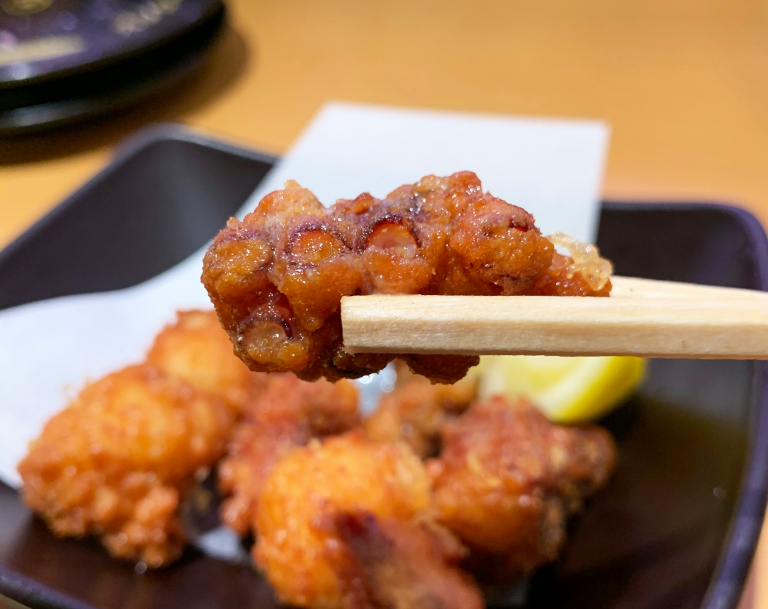
When Seiji did get around to trying it, he found it was delightfully crunchy, and the tart lemon juice paired nicely with its crispy batter. He also enjoyed the firmness of the parboiled octopus…All that together made for a very tasty dish. As expected, a sushi restaurant would know how to draw out the true potential of the octopus.
Kurara: “Lastly, the ‘Tamago no Hashi’ (たまごの端) is the perfect way to end your meal.”
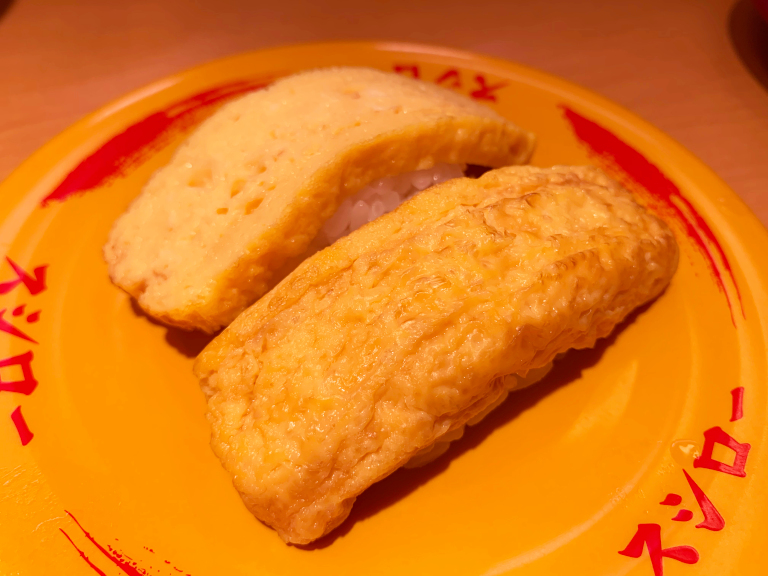
This is a version of a Japanese omelet laid over a bed of sushi rice, but it’s a secret menu item that you have to ask for. It comes larger and firmer than regular “tamago-yaki” sushi, and makes for the perfect end to your fully-cooked Sushiro Dinner.
Kurara gave us some really tasty recommendations, so if you’re at a loss as to where to start, try these! Of course, kaiten-zushi chains like Sushiro all offer tons of things that aren’t made of raw fish on their menu, like chawan-mushi egg custard and even dessert, so the best way to go about it is probably to just try everything out and see what you like best. Maybe then you, too, can become a kaiten-zushi superfan, even if you don’t like raw fish!
Images © SoraNews24
● Want to hear about SoraNews24’s latest articles as soon as they’re published? Follow us on Facebook and Twitter!
Credit:

0 comments:
Post a Comment